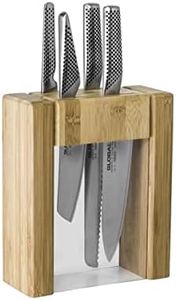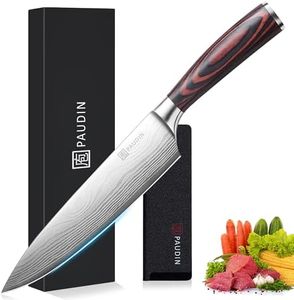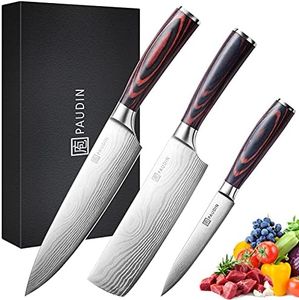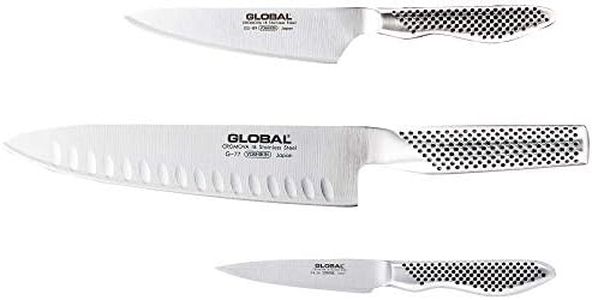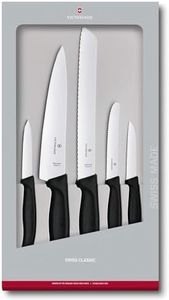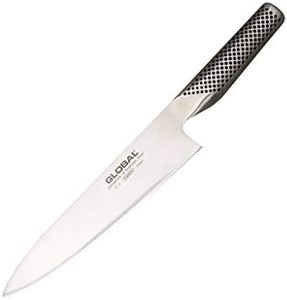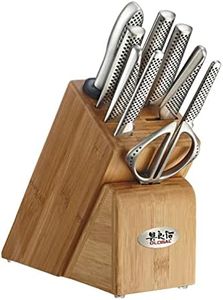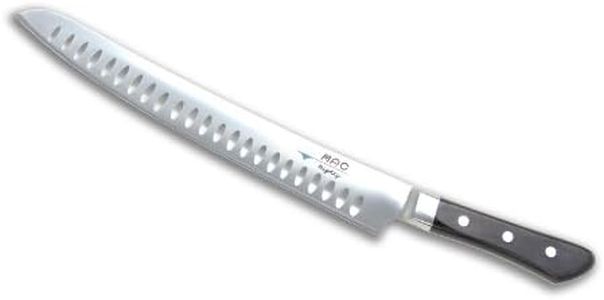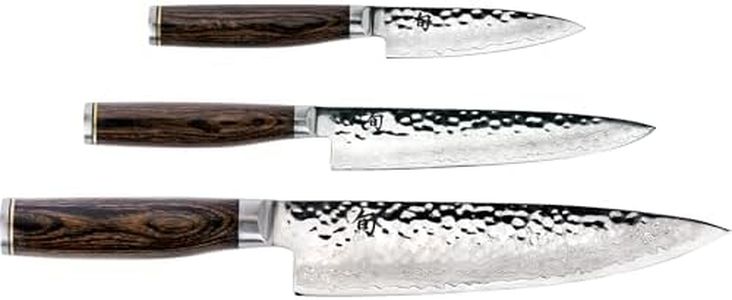We Use CookiesWe use cookies to enhance the security, performance,
functionality and for analytical and promotional activities. By continuing to browse this site you
are agreeing to our privacy policy
10 Best Kitchen Knives
From leading brands and best sellers available on the web.Buying Guide for the Best Kitchen Knives
Choosing the right kitchen knife is a big step toward making your cooking easier, safer, and more enjoyable. A well-chosen knife can help you cut, chop, slice, and dice with greater control and comfort. Before buying, think about how often you cook, what kind of food you usually prepare, and how the knife feels in your hand. Pay attention to the main characteristics and match them with your needs, as the best knife for one person might not be perfect for another.Blade MaterialThe blade material refers to what the knife is made from, such as stainless steel, carbon steel, or ceramic. This is important because it affects sharpness, durability, resistance to rust, and maintenance needs. Stainless steel blades are common due to their resistance to rust and ease of upkeep, while carbon steel blades stay sharper for longer but require more care to prevent rust. Ceramic blades are very sharp and don’t rust, but they can chip or break if dropped. If you want a low-maintenance knife, stainless steel is a good choice. If you care more about sharpness and don’t mind some upkeep, carbon steel might suit you. Ceramic is best for lightweight slicing, but be cautious with bones or hard foods.
Blade LengthBlade length is the measurement from the handle to the tip of the blade. Common lengths for chef's knives range from 6 to 10 inches, while paring knives are usually 3–4 inches. Longer blades can handle bigger tasks like chopping large vegetables or slicing meat, while shorter blades offer better control for smaller or intricate tasks. If you mainly do prep work with fruits, herbs, or small veggies, a shorter blade could feel more manageable. For all-purpose cooking, a mid-range blade size is versatile. If you regularly cook large meals or cut big items, a longer blade might make things easier.
Handle Comfort and MaterialThe handle affects how comfortable and secure the knife feels in your hand. Handles are made from wood, plastic, or composite materials. Wooden handles have a classic look and feel, but may need extra care to avoid cracking or absorbing moisture. Plastic and composite handles are often lighter, resistant to water, and easier to clean. When choosing, hold the knife if possible—it should feel balanced and comfortable, without slipping. If you have smaller hands or do lots of chopping, a slim, ergonomic handle may feel best. For wet environments, grippy synthetic handles add safety.
Blade Type and ShapeBlade type and shape define how the knife performs for different tasks. For example, chef's knives have a curved blade for rocking motions, while Santoku knives have a flatter edge for precision chopping. Bread knives have a serrated edge to slice through crusts, while paring knives are small and nimble for tasks like peeling. Consider what you cook most: for general prep, a chef's or Santoku knife is ideal; for lots of bread or tomatoes, a serrated blade is handy; for small, detailed work, a paring knife is best.
Weight and BalanceWeight refers to how heavy or light the knife feels, and balance means how evenly that weight is distributed between the blade and the handle. Heavier knives can cut through dense foods with less effort but may cause fatigue with extended use. Lighter knives are easier to control and better for quick, repetitive tasks. Balance is key for control and comfort—if the knife feels tipsy toward the handle or blade, it may be harder to manage. Try picking up different knives to see what feels natural. If you do heavy-duty cutting, a weightier knife may work better; for delicate slicing, lighter is preferable.
Edge Retention and Ease of SharpeningEdge retention is how long the blade stays sharp before needing sharpening. Some knives hold their edge longer, meaning they cut well over time with little maintenance. However, knives that hold an edge well can sometimes be harder to sharpen when they do dull. Beginners or casual cooks may prefer knives that are easy to sharpen, even if they need attention more often. If you don’t mind sharpening and want a razor-sharp blade, look for knives known for edge retention. If you’d rather not sharpen often, pick a knife with an edge that’s easy to maintain with household tools.
Full Tang versus Partial TangTang is the part of the blade that extends into the handle. Full tang means the metal runs through the handle’s length, offering better balance and strength for tough cutting jobs. Partial tang has a shorter extension, making the knife lighter but sometimes less sturdy. For everyday or heavy-duty cooking, full tang knives are more reliable and less likely to break. If your tasks are light, a partial tang could be fine, but for durability and balance, full tang is often the preferred choice.

